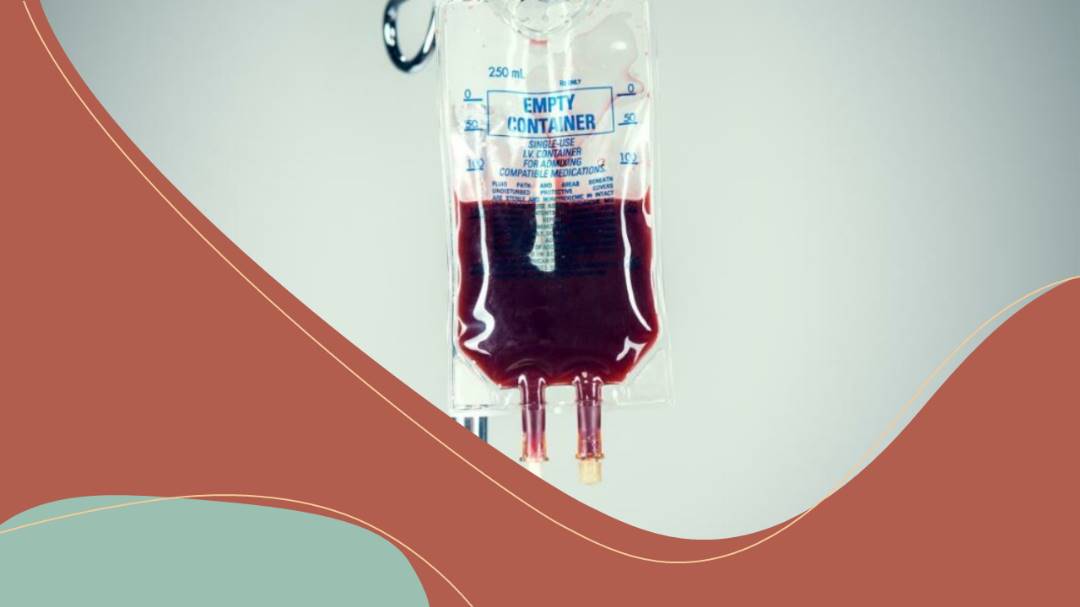Blood transfusion (BT) therapy involves transfusing whole blood or blood components (specific portion or fraction of blood lacking in the patient).
OBJECTIVES OF BLOOD TRANSFUSION
- To increase circulating blood volume after surgery, trauma, or hemorrhage
- To increase the number of RBCs and to maintain hemoglobin levels in clients with severe anemia
- To provide selected cellular components as replacements therapy (e.g. clotting factors, platelets, albumin)
POSSIBLE NURSING DIAGNOSIS
- Ineffective breathing pattern
- Decreased Cardiac Output
- Fluid Volume Deficit
- Fluid Volume Excess
- Impaired Gas Exchange
- Hyperthermia
- Hypothermia
- High Risk for Infection
- High Risk for Injury
- Pain
- Impaired Skin Integrity
- Altered Tissue Perfusion
COMPLICATIONS
Complications of blood transfusion include:
Allergic Reaction – it is caused by sensitivity to the plasma protein of donor antibody, which reacts with recipient antigen.
Assess for:
- Flushing
- Rash, hives
- Pruritus
- Laryngeal edema, difficulty in breathing
Febrile, Non-Haemolytic Reaction – it is caused by hypersensitivity to donor white cells, platelets or plasma proteins. This is the most symptomatic complication of blood transfusion
Assess for:
- Sudden chills and fever
- Flushing
- Headache
- Anxiety
Septic Reaction – it is caused by the transfusion of blood or components contaminated with bacteria.
Assess for:
- Rapid onset of chills
- Vomiting
- Marked Hypotension
- High fever
Circulatory Overload – it is caused by administration of blood volume at a rate greater than the circulatory system can accommodate.
Assess for:
- Rise in venous pressure
- Dyspnea
- Crackles or rales
- Distended neck vein
- Cough
- Elevated BP
Haemolytic reaction – it is caused by infusion of incompatible blood products.
Assess for:
- Low back pain (first sign). This is due to the inflammatory response of the kidneys to incompatible blood.
- Chills
- Feeling of fullness
- Tachycardia
- Flushing
- Tachypnea
- Hypotension
- Bleeding
- Vascular collapse
- Acute renal failure
NURSING INTERVENTIONS
Verify doctor’s order. Inform the client and explain the purpose of the procedure.
Check for cross-matching and grouping to ensure compatibility
Obtain and record baseline vital signs
Practice strict asepsis
At least 2 registered nurses should check the label of the blood transfusion. Check the following:
- Serial/Batch number
- Blood component
- Blood type
- Rh factor
- Expiration date
- Screening test (VDRL, HBsAg, malarial smear) – this is to ensure that the blood is free from blood-carried diseases and therefore, safe for transfusion.
Warm blood at room temperature before transfusion to prevent chills.
Identify the client properly. Two Nurses check the client’s identification.
Use needle gauge 18 to 19(cannula) to allow easy flow of blood.
Use BT set with a special micron mesh filter to prevent administration of blood clots and particles.
Start infusion slowly at 10 gtts/min. Remain at the bedside for 15 to 30 minutes. Adverse reaction usually occurs during the first 15 to 20 minutes.
Monitor vital signs. Altered vital signs indicate adverse reaction (increase in temp, increase in respiratory rate)
Do not mix medications with blood transfusion to prevent adverse effects. Do not incorporate medication into the blood transfusion. Do not use blood transfusion lines for IV push of medication.
Administer 0.9% NaCl before; during or after BT. Never administer BT with dextrose. Dextrose-based IV fluids cause hemolysis.
Administer BT for 4 hours (whole blood, packed RBC). For plasma, platelets, cryoprecipitate, transfuse quickly (20 minutes) clotting factor can easily be destroyed.
Observe for potential complications. Notify physician


